Thionin-like peptide from Capsicum annuum fruits: mechanism of action and synergism with fluconazole against Candida species
- PMID: 26819228
- PMCID: PMC4729097
- DOI: 10.1186/s12866-016-0626-6
Thionin-like peptide from Capsicum annuum fruits: mechanism of action and synergism with fluconazole against Candida species
Abstract
Background: Thionins are a family of plant antimicrobial peptides (AMPs), which participate in plant defense system against pathogens. Here we describe some aspects of the CaThi thionin-like action mechanism, previously isolated from Capsicum annuum fruits. Thionin-like peptide was submitted to antimicrobial activity assays against Candida species for IC50 determination and synergism with fluconazole evaluation. Viability and plasma membrane permeabilization assays, induction of intracellular ROS production analysis and CaThi localization in yeast cells were also investigated.
Results: CaThi had strong antimicrobial activity against six tested pathogenic Candida species, with IC50 ranging from 10 to 40 μg.mL(-1). CaThi antimicrobial activity on Candida species was candidacidal. Moreover, CaThi caused plasma membrane permeabilization in all yeasts tested and induces oxidative stresses only in Candida tropicalis. CaThi was intracellularly localized in C. albicans and C. tropicalis, however localized in nuclei in C. tropicalis, suggesting a possible nuclear target. CaThi performed synergistically with fluconazole inhibiting all tested yeasts, reaching 100% inhibition in C. parapsilosis. The inhibiting concentrations for the synergic pair ranged from 1.3 to 4.0 times below CaThi IC50 and from zero to 2.0 times below fluconazole IC50.
Conclusion: The results reported herein may ultimately contribute to future efforts aiming to employ this plant-derived AMP as a new therapeutic substance against yeasts.
Figures
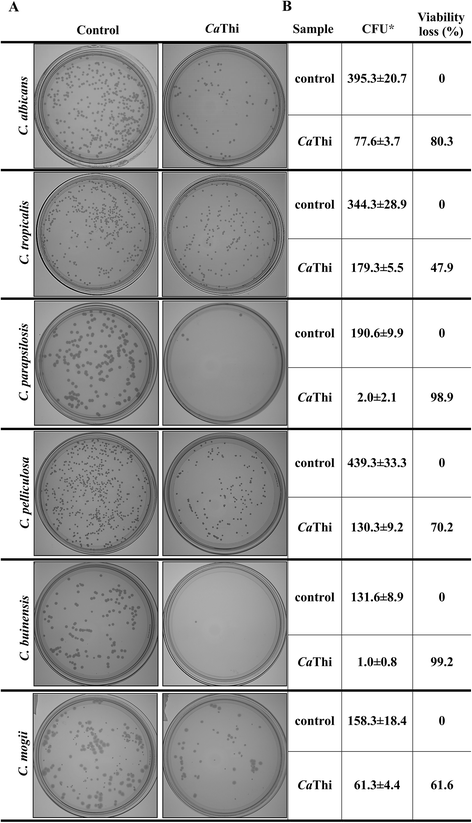
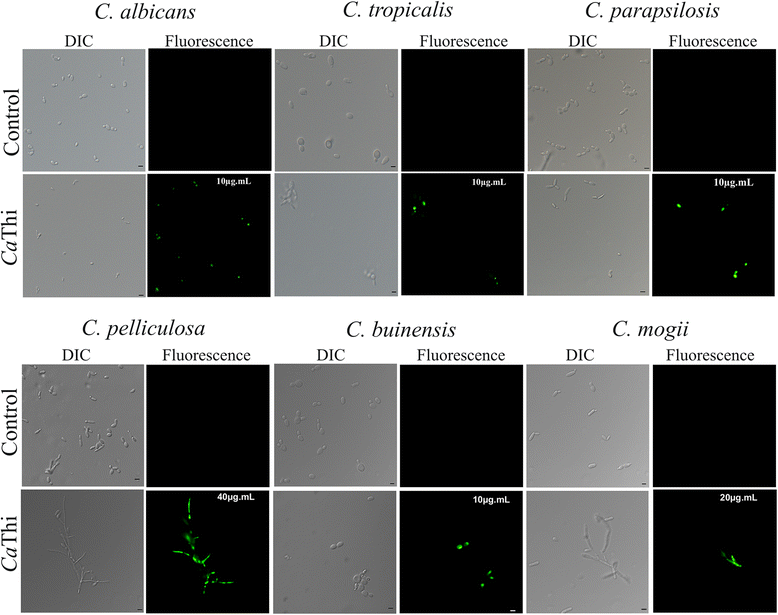
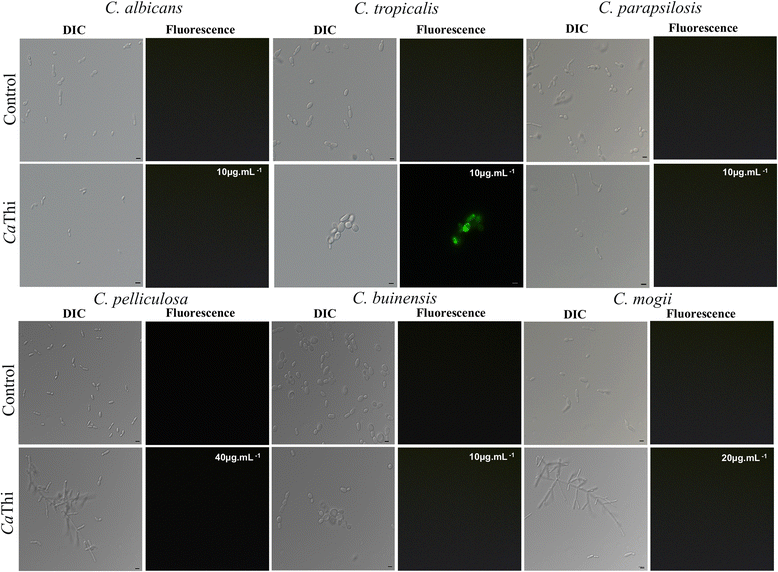
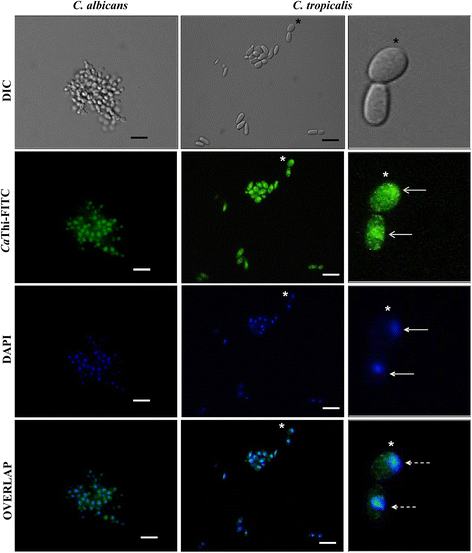
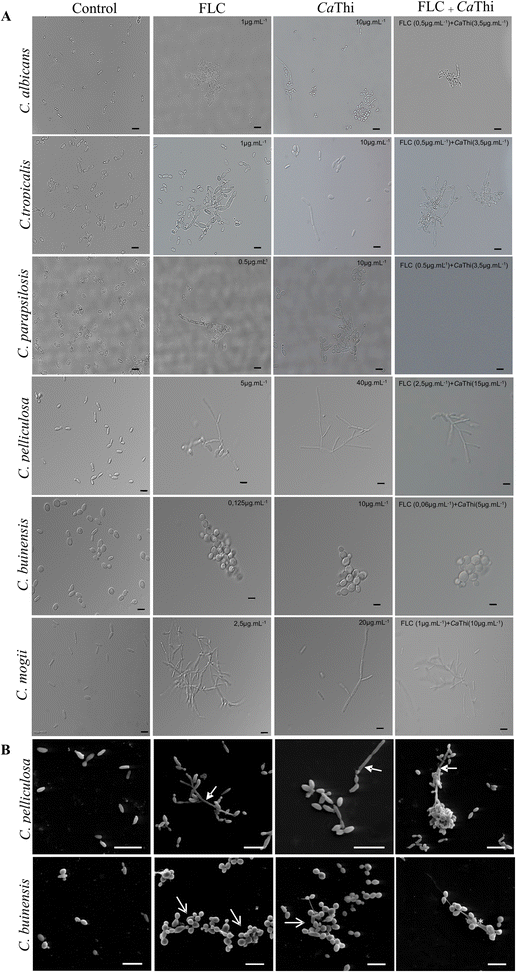
References
-
- Pappas PG. The role of azoles in the treatment of invasive mycoses: review of the Infectious Diseases Society of America guidelines. Curr Opin Infect Dis. 2011;24(Suppl 2):S1–S13. doi: 10.1097/01.qco.0000399602.83515.ac. - DOI - PubMed
Publication types
MeSH terms
Substances
LinkOut - more resources
Full Text Sources
Other Literature Sources

